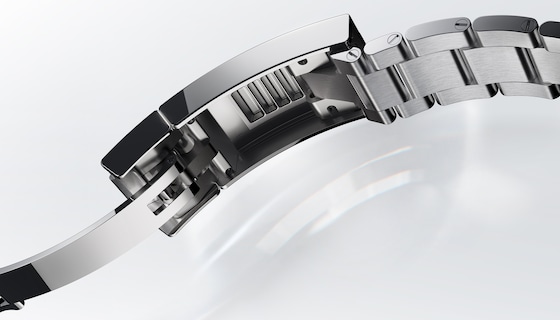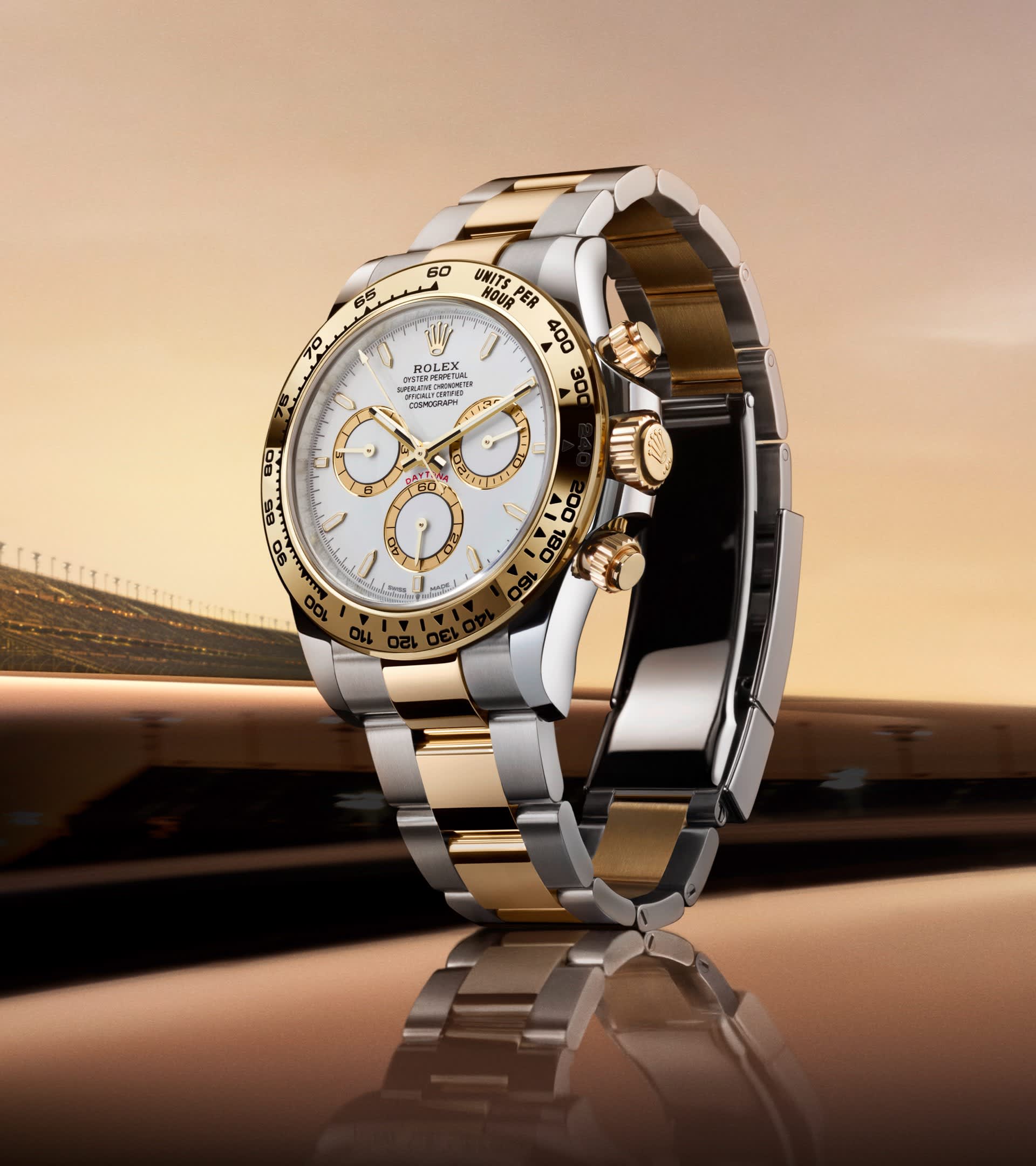
Rolex Oyster Bracelet: Ultimate Guide
Introduction

The Rolex Oyster Bracelet isn’t just a strap—it’s the backbone of Rolex’s rugged sport watch legacy. If you're a sports fan who loves durability, sweat resistance, and timeless style on your wrist, the Oyster bracelet is built to deliver. Born in the mid-20th century and refined by decades of subtle evolution, it’s the go-to choice for models like the Submariner, Daytona, GMT-Master, and Explorer.
In this deep dive, we’ll trace the bracelet’s fascinating origins—from its inspiration in nature to its patented improvements and shift from hollow riveted links to solid, wear-resistant construction. We’ll break down clasp types like Oysterlock and Glidelock, explore its performance under athletic use, and compare it with Rolex’s Jubilee and Oysterflex styles.
We’ll also show you how to size it for maximum comfort, authenticate vintage reference codes, and maintain it for longevity. Packed with expert insights, technical detail, and real-world perspective, this guide will show why the Rolex Oyster Bracelet remains the ideal match for both field-tested sports style and collector-level refinement.
Origins: Birth of the Oyster Bracelet
The Oyster Bracelet began in the late 1940s as a robust alternative to leather straps. Inspired by the oyster shell’s strength and durability, Hans Wilsdorf aimed for a design that protected both watch and wearer. Early models were supplied by Gay Frères, the renowned Swiss bracelet maker—Rolex only acquired them in 1998.
The first Oyster came with rivet hollow links, evolving into folded and solid-link generations. By 1952, Rolex patented curved end links for seamless case integration—an innovation that increased reliability and decreased pressure on spring bars.
Design Features & Materials
The Oyster bracelet's most identifiable feature is its three-link configuration, combining strength and elegance. Depending on the model, the outer links may be brushed while center links are polished (as seen on the Datejust or Daytona).
Rolex exclusively uses 904L Oystersteel, a high-grade corrosion-resistant alloy, for unmatched toughness. Gold models feature solid 18k gold links, while two-tone "Rolesor" variants blend steel and gold. This choice of material makes the Oyster bracelet one of the most durable and visually distinctive in the luxury world.
Evolution Through the Decades

The bracelet has evolved significantly:
-
1940s-1950s: Hollow rivet links
-
1960s-1970s: Folded links
-
1980s: Hollow center solid shell
-
2000s-present: Fully solid links, updated end-links
Each stage brought refinements in rigidity, comfort, and aesthetics. The most recent update also includes a milled clasp and solid end-links, improving case integration and weight distribution.
Clasp Types & Adjustment Systems

Modern Oyster bracelets come with several clasp styles:
-
Oysterclasp: Standard folding clasp, often seen on Datejust models
-
Oysterlock: Safety clasp with additional flip-lock for sport models
-
Glidelock: Micro-adjustment feature for Submariner/Sea-Dweller
-
Easylink: 5mm comfort extension system available across many references
These systems allow for real-time adjustment, crucial for athletes, divers, or anyone whose wrist size fluctuates.
Oyster vs Jubilee vs Oysterflex
| Feature | Oyster | Jubilee | Oysterflex |
|---|---|---|---|
| Links | 3 (flat, solid) | 5 (rounded, polished) | Elastomer with metal core |
| Style | Sporty | Dressy | Hybrid |
| Adjustability | Glidelock/Easylink | Easylink only | Adjustable clasp |
| Durability | High | Medium | High |
Jubilee is often seen on Datejusts and dressier models. Oysterflex is a modern innovation offering elastomer comfort with a hidden titanium blade inside—ideal for Yacht-Master wearers.
Models That Use the Oyster Bracelet
The Oyster bracelet is the default for many iconic Rolex lines:
-
Submariner
-
GMT-Master II
-
Daytona
-
Explorer & Explorer II
-
Sea-Dweller & Deepsea
-
Yacht-Master (in Oysterflex variants)
-
Oyster Perpetual (various sizes)
Its use across such a wide spectrum speaks to its versatility.
Sizing & Fit Tips
Modern Oyster bracelets are easy to size with a few tools. Glidelock clasps allow up to 20mm of adjustment in 2mm increments without tools. Easylink gives 5mm of instant flex. Links are removed by unscrewing small screws—no spring bars or pins.
Comfort tip: If wearing during physical activity, size slightly loose to accommodate wrist swelling.
Typical Link Counts by Rolex Model
Here is a quick reference chart showing the standard number of links included with some popular Rolex models that use the Oyster bracelet:
| Rolex Model | Typical Link Count |
| Submariner | 12 full + 1 half |
| GMT-Master II | 12 full + 1 half |
| Explorer (36/39mm) | 12 full |
| Explorer II | 12 full |
| Daytona | 12 full |
| Oyster Perpetual 36 | 12 full |
| Oyster Perpetual 41 | 12 full + 1 half |
| Sea-Dweller | 12 full + 1 half |
| Yacht-Master | 12 full |
Note: Actual number may vary slightly based on wrist sizing at purchase or whether an Easylink extension is installed. End links and clasp components are not counted as removable links.
Care, Maintenance & Authenticity
-
Clean with mild soap and a soft brush regularly to remove sweat or salt
-
Polish sparingly to avoid removing too much metal
-
Check for stretch in vintage bracelets—a sign of wear or poor servicing
-
Clasp & end-link codes can help verify production year
Vintage models with tight, original bracelets often command a premium.
Contemporary Enhancements
The most modern Oyster bracelets feature:
-
Solid end links
-
Milled Oysterlock clasps
-
Internal ceramic sleeves to reduce link friction
These improvements reduce stretch and improve tactile feel, especially during clasp operation.
What Makes the Oyster Bracelet Iconic?
It’s not just heritage—the Oyster bracelet represents Rolex’s incremental innovation philosophy. No sudden overhauls—just quiet, durable refinement over 70+ years. It’s instantly recognizable yet never flashy, combining form and function like no other bracelet.
Oyster Bracelet: Fit for Sports Fans

From tennis courts to race tracks, the Oyster bracelet delivers:
-
Security with safety clasps and non-slip finish
-
Micro-adjustment for gloves or swelling
-
Sweat and corrosion resistance with 904L steel
Athletes and adventurers value the balance between style and performance. Even off the field, it complements casual or athletic wear with ease.
Buying Guide & Reference Tips
-
Clasp codes: Often engraved; match to production years
-
Reference numbers: Confirm compatibility when sourcing pre-owned bracelets
-
Service history: A polished or replaced bracelet may reduce value
-
Authenticity check: Real Rolex bracelets feel solid, not flimsy, and have smooth screw threading
Avoid aftermarket versions unless verified—bracelets affect the watch’s integrity and resale.
Conclusion
When it comes to combining sport-level durability and timeless style, the Rolex Oyster Bracelet stands unrivalled. Its origins in functional simplicity have informed decades of refinement. Every design update—from patented end links to Glidelock extension—has reinforced its reputation.
For sports fans and adventurers, this bracelet isn’t a compromise—it’s purpose-built. Whether diving in a Submariner or hiking in an Explorer, it offers flexibility, strength, and polish. Among Rolex’s iconic designs, the Oyster bracelet is more than hardware. It’s part of the Rolex identity.
FAQs
1. Is the Rolex Oyster bracelet better than Jubilee?
Yes—for sports use. It’s more rigid, scratch-resistant, and built for active wear.
2. What is Glidelock and how does it work?
A fine-tuned extension system on some clasps allowing 20mm adjustment without tools.
3. Can you wear the Oyster bracelet for swimming or diving?
Absolutely. It’s corrosion-resistant and designed for underwater durability.
4. How do you clean a Rolex Oyster bracelet?
Use lukewarm water, mild soap, and a soft brush. Rinse well and dry with a microfiber cloth.
5. How can I tell if my Oyster bracelet is authentic?
Check clasp codes, end-link markings, screw quality, and weight. Flimsy feel or missing stamps = red flag.



